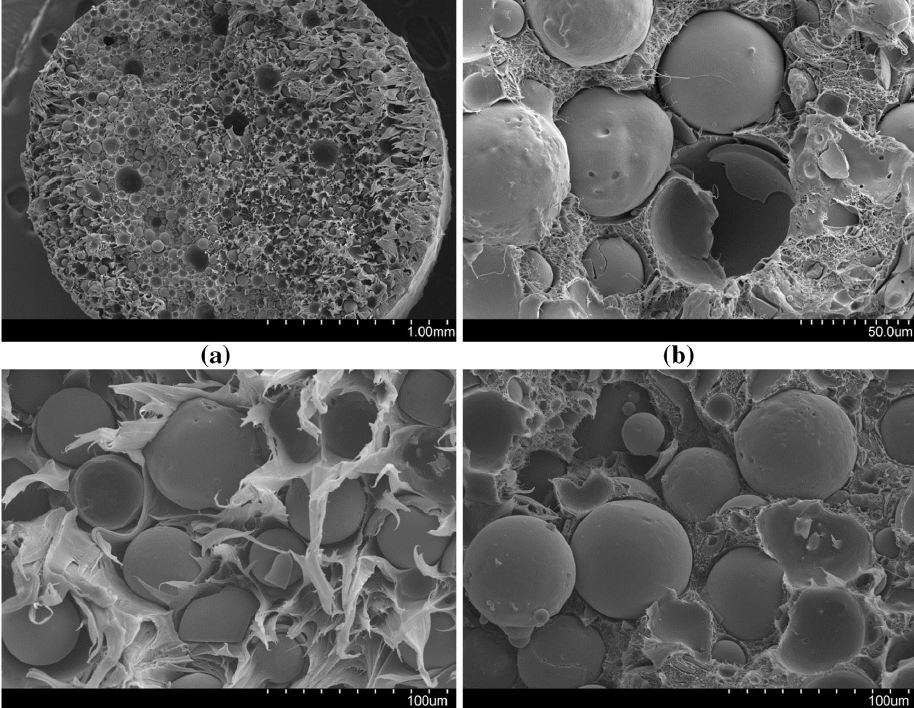3D printed foams are used in experiments by materials scientists to make everyday objects smarter, and more effective for purpose. Containing millions of hollow microballoon air pockets, foams are lightweight, and enable materials to be manipulated in new and exciting ways.
Foam has been used variously to make a type of 3D graphene, form fitting silicone, and 3D bioprinted in-air microfluidics.
Now, for the first time, a team at NYU Tandon School of Engineering in New York have developed a method of 3D printing a type of composite syntactic foam uses commercially available FFF desktop 3D printers.
Commonly used in the construction of vehicles, from planes to cars, and submarines, the foam demonstrates an ability to 3D print stronger, geometrically complex parts for pressurised conditions hundreds of feet under the sea.
3D printed microballoons
The main challenge of 3D printing using syntactic foam is fitting microballoons, also called microspheres, through a 3D printer’s nozzle. The main breakthrough of the Tandon School’s research is that the team has been able to create a filament containing the spheres that can pass through unmodified commercial 3D printers, therefore simplifying the process.
Nikhil Gupta, associate professor of mechanical and aerospace engineering at NYU, is one of the study’s collaborators, who previously co-authored a study concerning the theft of 3D printable files. Gupta explains, “Our focus was to develop a filament that can be used in commercial printers without any change in the printer hardware,
“There are a lot of parameters that affect the printing process, including build-plate material, temperature, and printing speed. Finding a set of optimum conditions was the key to making the printing of high-quality parts possible.”
Microspheres within the team’s syntactic foam also contain recycled fly-ash, a by-product of coal production plants, and valuable insulator.

Stronger 3D printed parts
Ashish Kumar Singh, a doctoral student under the supervision of Gupta led the study. With development, Singh et al’s breakthrough could mean that engineers will one day be able to print large syntactic foam parts in a single piece, eradicating weaknesses that occur in multiple, injection-molded parts.
Singh comments, “The survival of hollow particles first during filament manufacturing and then in the 3D-printing process requires a lot of process control,”
However, “The results show that the properties of 3D-printed syntactic-foam components are at par with the widely used traditional injection-molded parts of the same material.”

Ashish Kumar Singh, Balu Patil, Niklas Hoffmann, Brooks Saltonstall, Mrityunjay Doddamani and Nikhil Gupta have authored two papers on 3D printed syntactic foam. Published online in Additive Manufacturing of Composites and Complex Materials journal, the Part 1 can be viewed here, and Part Two here.
Is this award-winning research? Nominate the University of Twente research group now in the 2018 3D Printing Industry Awards.
For more industry-leading research subscribe to the most widely read newsletter in the industry here, like 3D Printing Industry on Facebook and follow us on Twitter.
Featured image shows a graphic mock-up of the next generation Alvin deep-sea explorers submarine to be made using syntactic foam. Image via DD3D Studio


